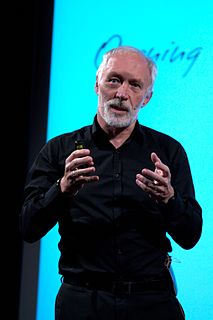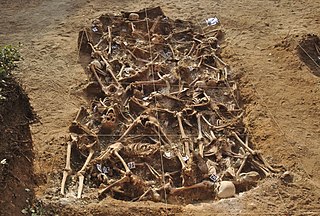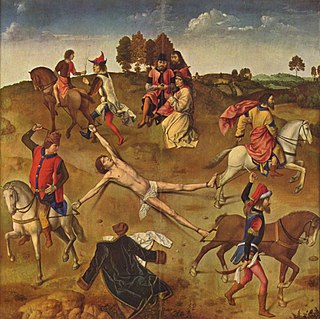Schizoaffective disorder is a mental disorder characterized by abnormal thought processes and an unstable mood. The diagnosis is made when the person has symptoms of both schizophrenia and a mood disorder—either bipolar disorder or depression—but does not meet the diagnostic criteria for schizophrenia or a mood disorder individually. The main criterion for the schizoaffective disorder diagnosis is the presence of psychotic symptoms for at least two weeks without any mood symptoms present. Schizoaffective disorder can often be misdiagnosed when the correct diagnosis may be psychotic depression, psychotic bipolar disorder, schizophreniform disorder or schizophrenia. It is imperative for providers to accurately diagnose patients, as treatment and prognosis differs greatly for each of these diagnoses.
Stimulant psychosis is a mental disorder characterized by psychotic symptoms which involves and typically occurs following an overdose on psychostimulants; however, it has also been reported to occur in approximately 0.1% of individuals, or 1 out of every 1,000 people, within the first several weeks after starting amphetamine or methylphenidate therapy.

Suicidal ideation, also known as suicidal thoughts, is thinking about, considering, or planning suicide. The range of suicidal ideation varies from fleeting thoughts, to extensive thoughts, to detailed planning.
The trauma model of mental disorders, or trauma model of psychopathology, emphasises the effects of physical, sexual and psychological trauma as key causal factors in the development of psychiatric disorders, including depression and anxiety as well as psychosis, whether the trauma is experienced in childhood or adulthood. It conceptualises victims as having understandable reactions to traumatic events rather than suffering from mental illness.
Dr. Thomas McGlashan is an American professor of psychiatry at Yale University, well known for his academic contributions to the study of schizophrenia and other mental illnesses.

Most Evil is an American forensics television program on Investigation Discovery presented by forensic psychiatrist Dr. Michael H. Stone of Columbia University during Seasons 1 & 2; and by forensic psychologist Dr. Kris Mohandie during Season 3. On the show, the presenter rates murderers on a scale of evil that Stone himself has developed. The show features profiles on various murderers, serial killers, and mass murder of various degrees of psychopathy.
Psychopathy is traditionally a personality disorder characterized by persistent antisocial behavior, impaired empathy and remorse, and bold, disinhibited, and egotistical traits. It is sometimes considered synonymous with sociopathy. Different conceptions of psychopathy have been used throughout history that are only partly overlapping and may sometimes be contradictory.
Homicidal ideation is a common medical term for thoughts about homicide. There is a range of homicidal thoughts which spans from vague ideas of revenge to detailed and fully formulated plans without the act itself. Many people who have homicidal ideation do not commit homicide. 50-91% of people surveyed on university grounds in various places in the United States admit to having had a homicidal fantasy. Homicidal ideation is common, accounting for 10-17% of patient presentations to psychiatric facilities in the United States.
Menstrual psychosis is a term describing psychosis with a brief, sudden onset related to the menstrual cycle, often in the late luteal phase just before menstruation. The symptoms associated to it are dramatic and may include delirium, mania or mutism. Most psychiatrists do not recognise the syndrome as a distinct condition.
Early intervention in psychosis is a clinical approach to those experiencing symptoms of psychosis for the first time. It forms part of a new prevention paradigm for psychiatry and is leading to reform of mental health services, especially in the United Kingdom and Australia.
Barbara A. Cornblatt is a professor of psychiatry and molecular medicine at Hofstra Northwell School of Medicine. Cornblatt is known for research on the treatment and cause of serious mental illness, with a specific focus on Psychosis and Schizophrenia. Her focus is on finding treatments to help the youth with mental illnesses led to the development of the Recognition and Prevention Program, which she founded in 1998. In 1996 she was the recipient of the Joseph Zubin Award.

Jeffrey Alan Lieberman is an American psychiatrist who specializes in schizophrenia and related psychoses and their associated neuroscience (biology) and drugs. He was principal investigator for CATIE, the largest and longest independent study ever funded by the United States National Institute of Mental Health to examine existing therapies for schizophrenia.

The long-term effects of cannabis have been the subject of ongoing debate. Because cannabis is illegal in most countries, research presents a challenge; as such, there remains much to be concluded.

Patrick Dennistoun McGorry FAA FASSA FAHMS FRCP FRANZCP is an Irish-born Australian psychiatrist known for his development of the early intervention services for emerging mental disorders in young people.
Substance-induced psychosis is a form of substance use disorder where psychosis can be attributed to substance use. It is a psychosis that results from the effects of chemicals or drugs, including those produced by the body itself. Various psychoactive substances have been implicated in causing or worsening psychosis in users.

Neurocriminology is an emerging sub-discipline of biocriminology and criminology that applies brain imaging techniques and principles from neuroscience to understand, predict, and prevent crime.
At risk mental state is the clinical presentation of those considered at risk of developing psychosis or schizophrenia. Such states were formerly considered treated as prodromes, emerging symptoms of psychosis, but this view is no longer prevalent as a prodromal period can not be confirmed unless the emergence of the condition has occurred.
Celso Arango is a Spanish psychiatrist who has worked extensively as a clinician, researcher, and educator in psychiatry and mental health, notably in the field of child and adolescent psychiatry, psychosis, and mental health promotion. As a result of this work, Dr. Arango has received national and international recognition with the most prestigious awards and distinctions in the field of psychiatry.














